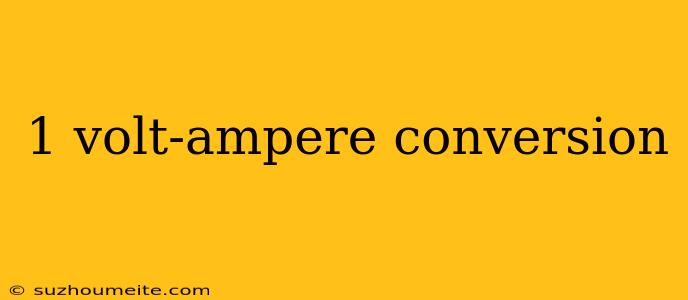Volt-Ampere (VA) Conversion: Understanding the Basics
What is Volt-Ampere (VA)?
Volt-ampere (VA) is a unit of measurement that represents the apparent power in an electrical circuit. It is calculated by multiplying the voltage (V) and amperage (A) of the circuit. VA is used to express the total power of an electrical system, including both active and reactive power.
Converting Volt-Ampere (VA) to Watts (W)
VA and watts (W) are often confused, but they are not interchangeable. Watts represent the real power in a circuit, while VA represents the apparent power. To convert VA to W, you need to know the power factor (PF) of the circuit.
The Power Factor (PF)
The power factor (PF) is the ratio of real power (W) to apparent power (VA). A power factor of 1 is ideal, but in practice, it is usually less than 1. The power factor depends on the type of load, such as resistive, inductive, or capacitive.
Conversion Formula
To convert VA to W, use the following formula:
W = VA * PF
Where:
- W is the real power in watts
- VA is the apparent power in volt-amperes
- PF is the power factor
Example Conversion
Suppose you have a circuit with a voltage of 120V and a current of 10A. The apparent power (VA) is:
VA = V * A = 120V * 10A = 1200VA
If the power factor (PF) is 0.8, the real power (W) would be:
W = VA * PF = 1200VA * 0.8 = 960W
Conclusion
In conclusion, understanding the basics of volt-ampere conversion is essential for electrical engineers and technicians. By knowing how to convert VA to W, you can accurately calculate the real power in a circuit and design efficient electrical systems. Remember to always consider the power factor when making conversions to ensure accurate results.
